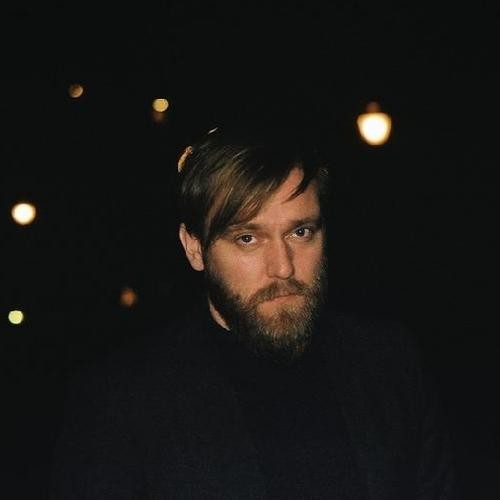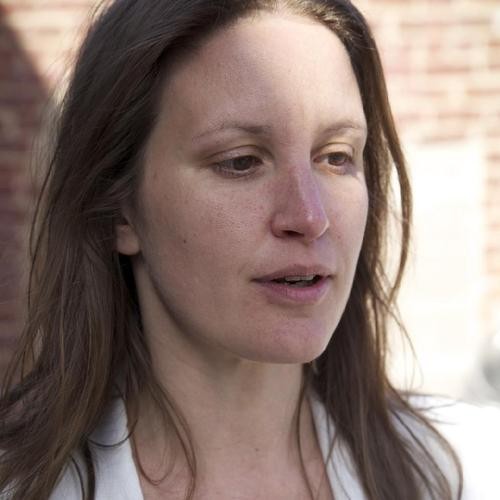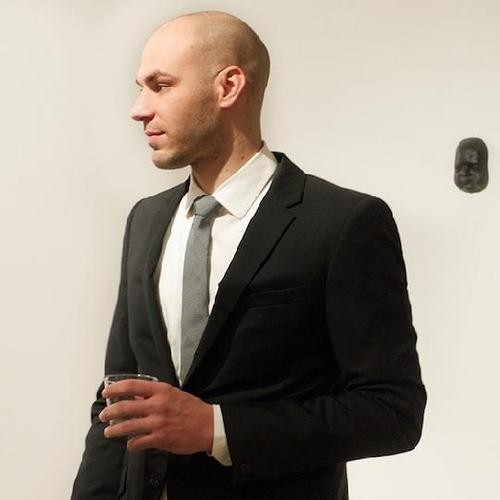Since beginning his extraordinary career in the 1970s, the photographer Thomas Ruff has participated in—and often anticipated—the evolution of his medium, beginning with the classically framed compositions of the mid-20th century and venturing, with his latest work, into the vanguard of high-concept abstraction and appropriation. Today Ruff has traveled far from his roots in the Düsseldorf School, which was characterized by its cold-eyed gaze at familiar subjects, to probe the mysteries of the universe with quietly ecstatic photographs that capture the stars above and the pure ballets of science.
To learn more about the artist's trajectory, Artspace editor-in-chief Andrew M. Goldstein spoke to Ruff about how he first came to photography, and why he now devotes himself to exploring the very limits of his medium in his most recent work.
Your photography runs the gamut of the medium, ranging from portraits to architectural landscapes to found imagery to digitally manipulated abstractions. What was it that first drew you to photography?
The SLR camera of a friend. I was 16 at the time.
What was your first truly significant art experience growing up?
There was no significant art in the small town where I grew up, so my first encounter with contemporary art was at the art academy in Düsseldorf.
You famously studied with Bernd and Hilla Becher at the Kunstakademie Düsseldorf, where the husband-and-wife photographers inspired a generation of artists through their typological approach to the medium. What led you to study there, and what was it about their teaching that was so inspirational?
In 1977, the art academy in Düsseldorf was the only one in Germany where they had a photography class that was comparable to a painting class. That made me decide to apply. I did not know the work of Bernd and Hilla Becher, and I did not know that they were teaching there. At the age of 19, coming from a small town, I just thought that the most beautiful photographs must be done at an art academy where they also paint the most beautiful paintings.
You have also said that an important influence on your work was the lectures of the art historian Benjamin Buchloh. What were the lectures, and what did you learn from him?
As I mentioned before, I did not know anything about art, so during the first year at the academy I visited the seminar of Benjamin Buchloh, where he introduced the students to the world of Minimalism and conceptual art—I was fascinated and liked it immediately.
You first gained international attention for your series of portraits that you took of your friends, colleagues, and fellow students, posing them against a monochromatic background of their choosing and capturing them expressing a minimum of emotion. What inspired this photographic approach?
I wanted to go back to point zero with my portraits, to take away all the useless things in the genre of portraiture. I really wanted to do “naked” portraits.
You've said before that your portraiture technique is similar to methods the German police employed in the 1970s—a connection that you further explored in the early '90s with the photos you made with the Minolta Montage Unit, a police device used to combine multiple portraits into a believable composite. Around the same time, during the Gulf War, you also used infrared lenses of the kind used by the military in Iraq to capture urban landscapes at home for your Nacht series. What drew you to using techniques derived from police work and war?
I would guess that “artistic” photographs occupy only five percent of the output of the medium. There are other uses by the police, the military, science, astronomy, medicine, everyday life, et cetera, et cetera, et cetera. I think that a lot of these photographs are more interesting than the “artistic” ones, so it became obvious to me to investigate these kind of photographs.
You are also celebrated for your photographs of buildings, which seem to take direct inspiration from the Bechers. How did you select the buildings you captured, and what do you hope the viewer takes away from them?
I was looking for average, "normal” buildings—buildings my generation grew up in. Mainly postwar architecture, fast and cheaply built in the '60s and '70s. They related to the ideas of Bauhaus architecture, but they were bad imitations of that idea, and ugly. I wanted to show the misinterpretation of a visionary idea.
More recently you have employed found imagery in your work, blowing up and often distorting such pictures as archival starscapes from a Chilean observatory for Sterne, NASA photos of planets for Cassini, shots from Internet pornography for your Nudes, and documentary Web images for Jpegs. What led you to begin using these found images in your work, and how do you select them?
It all began with the stars. I wanted to make super-sharp, really precise photographs of the starry sky, but quite soon I realized that even though I was professionally educated and professionally equipped, I was not able to take those photographs by myself. I needed the help of an observatory with a big telescope. For the first time, I had to give up authorship to create these images. At that time appropriation was already a common artistic practice. After this experience it became easier for me to give up authorship and to solicit the help of other people.
You have previously used the term "fictional photography" in discussing your work. Can you explain how that idea plays into what you do?
I used that term in relation to my work m.a.r.s.—photographs taken by a high-resolution camera from the orbit of Mars. By coloring and compressing these images, I created views of the Martian landscape that astronauts will see when they will land on Mars in 20 or 30 years. So these works are fictional, and yet they look realistic at the same time.
Would you say that there is an underlying concern or investigation that runs through your work?
I am interested in photography as a whole, and the influence that it has on our brain and our perception of the world.
You have recently begun making forays into pure abstraction, distorting Manga images for Substrat, illustrating electromagnetic equations for Zycles, and creating new computer-generated images for your Photograms. What appeals to you about abstract photography on a conceptual level?
The world is abstract. Take a look at the scientific photographs of atomic particles colliding taken at CERN in Geneva.
Is there anything, art or objects, that you collect yourself?
I collect a lot of different things—art, objects, anything that attracts me.
RELATED LINKS:
Close Look: Thomas Ruff's Boundary-Blurring Photography



























